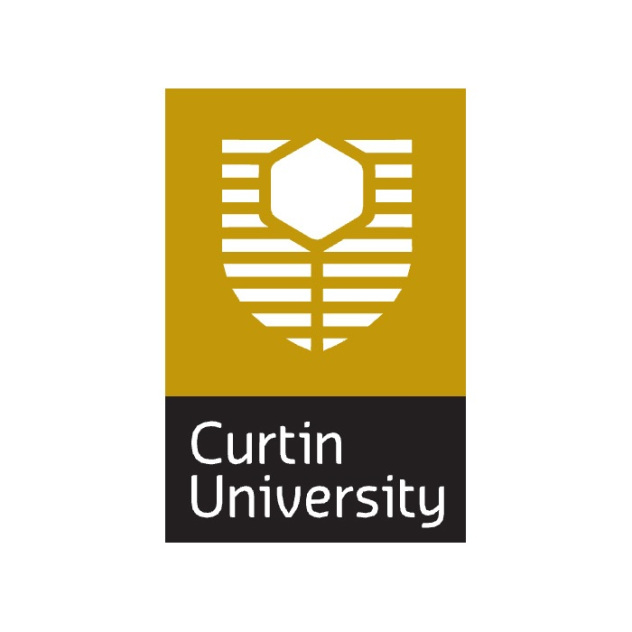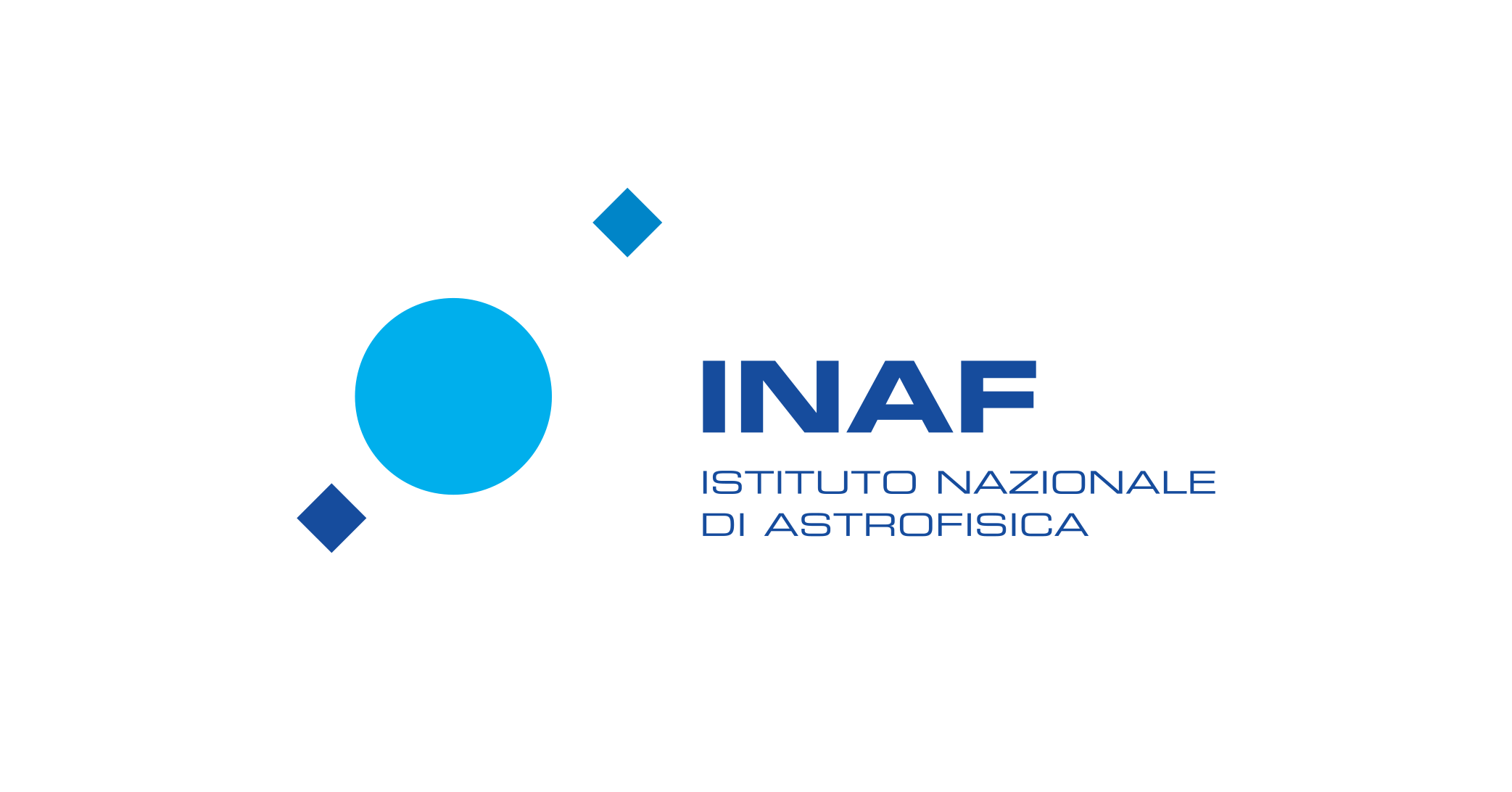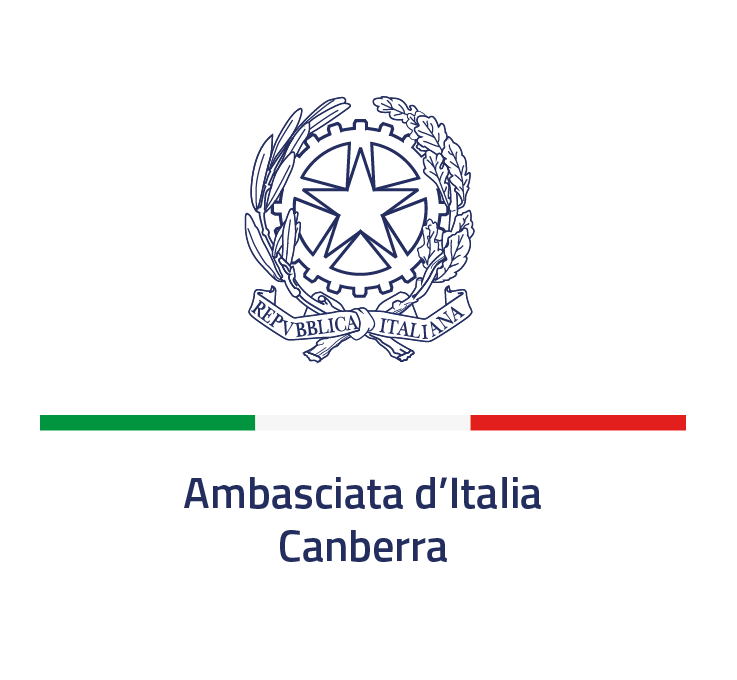Baracchi III: The third Pietro Baracchi conference
Virtual meeting
IMPORTANT: Registration deadline - November 1st, 2021 - 11:00 UTC

Baracchi III is the third conference of a series named in honour of Pietro Paolo Giovanni Ernesto Baracchi (1851 — 1926), an Italian who played a central role in Australian astronomy in the late 1800s and early 1900s.
The first and second Pietro Baracchi conferences, celebrating the rich history and current collaborations between Italian and Australian astronomy, have highlighted many areas of common interest and activity between the two countries, and have led to new connections.
Rationale
We wish to continue this positive engagement, even though the world continues to be highly disrupted by the COVID-19 pandemic. Thus, Baracchi III will adopt an online format.
Given the breadth of collaboration in astronomy and associated engineering and technology between Australia and Italy, Baracchi III will adopt a broad rationale.
There will be invited talks from across all areas of astrophysics and engineering, on four main themes with high common activity (two talks per each country per theme):
- the Square Kilometre Array (SKA) project;
- the European Southern Observatory (ESO);
- the Cherenkov Telescope Array Observatory (CTAO);
- Gravitational waves and multi messenger astronomy.
In addition, two special featured talks will open each day of the meeting.
To take into account time zone differences between Australia and Italy, the conference is scheduled on two half-days:
November 3 and 4, 2021 - 7:00-11:00 UTC (8:00-12:00 CET / 15:00-19:00 AWST / 18:00-22:00 AEDT).
Note that the timetable is in UTC (your timezone can be set through the top-right button)
The conference does not have any registration fee.
Scientific Organizing Committee
Steven Tingay co-chair (Curtin University, Australia)
Giulia Macario co-chair (INAF - Arcetri Astrophysical Observatory, Italy)
Gavin Rowell (University of Adelaide, Australia)
Giovanni Cresci (INAF - Arcetri Astrophysical Observatory, Italy)
Elaine Sadler (CSIRO, Australia)
Giuseppina Micela (INAF - Palermo Astronomical Observatory, Italy)
Sponsoring Institutions



-
-
WelcomeConveners: Francesca Tardioli ( Embassy of Italy), Dr Giulia Macario (Istituto Nazionale di Astrofisica (INAF)), Steven Tingay (Curtin University)
-
1
WelcomeSpeakers: Francesca Tardioli ( Embassy of Italy), Dr Giulia Macario (Istituto Nazionale di Astrofisica (INAF)), Steven Tingay (Curtin University)
-
a) WelcomeSpeaker: Francesca Tardioli ( Embassy of Italy)
-
b) WelcomeSpeaker: Dr Giulia Macario (Istituto Nazionale di Astrofisica (INAF))
-
c) WelcomeSpeaker: Steven Tingay (Curtin University)
-
-
1
-
Featured presentation 1: chair S. Tingay
-
2
Astronomical Science, Astronomical Challenges at the Pawsey Supercomputing Centre
After introducing the Pawsey Supercomputing Centre and describing the new HPC infrastructure being deployed, the presentation will focus on the astronomy projects supported at the centre, giving insights on current and future challenges, ending with an overview of the technology landscape and how future developments in technology will affect the scientific discovery workflow.
Speaker: Ugo Varetto (Pawsey Supercomputing Centre, Perth, Australia)
-
2
-
The Cherenkov Telescope Array Observatory (CTAO): chair N. Tothill
-
3
Pulsars from radio to TeV Gammas
Pulsars are highly magnetised, fast spinning neutron stars. Their pulsations can be observed across an extremely wide electromagnetic window, from radio to high energy Gamma-ray. In this talk, I will briefly review observational properties of different populations of pulsars (e.g., young pulsars, magnetars and millisecond pulsars) and their emissions from radio to Gamma-ray. I will then focus on radio and high energy Gamma-ray emission of pulsars and talk about some recent observational progresses. I’ll finish my talk with discussions on pulsar science with future telescopes such as CTA and SKA.
Speaker: Shi Dai (Western Sydney University/CSIRO-CASS, Sydney, Australia) -
4
Multi-Wavelength Linkages between Radio and Optical Facilities in Australia and the Cherenkov Telescope Array
The Cherenkov Telescope Array (CTA) is the next-generation observatory for ground-based gamma-ray astronomy. With more than 100 telescopes equipped with state-of-the-art technologies, it will provide a new view of the sky at energies from 20 GeV to 300 TeV at unprecedented sensitivity and angular resolution. Australia has a strong reputation in radio and optical astronomy and has made major investments to its facilities. These facilities will play a key role in achieving CTA’s key science projects. In this contribution, I will provide an overview of radio and optical instruments in Australia and will outline their linkages with CTA and common research interests.
Speaker: Sabrina Einecke (University of Adelaide, Adelaide, Australia) -
5
Impact of future gamma ray observations on the study of the interstellar medium, and galactic cosmic ray accelerators
More than a century after their discovery, the origin of cosmic rays is still a matter of debate. Gamma ray observations are one of the most powerful ways to test our ideas about cosmic ray origin. This is because gamma-ray photons are unavoidably produced in interactions between these energetic particles and interstellar matter. In this talk, I will briefly review the status of the field, and describe how gamma ray observations can be used to learn something about both cosmic rays and the interstellar medium. Particular attention will be devoted to the role that will be played by future gamma ray facilities such as the Cherenkov Telescope Array.
Speaker: Stefano Gabici (Laboratoire APC, Paris, France) -
6
CTAO – the World’s largest ground-based gamma-ray observatory
Very-high-energy (VHE) gamma-ray astroparticle physics is a relatively young field, and observations over the past decade have surprisingly revealed almost two hundred VHE emitters which appear to act as cosmic particle accelerators. These sources are an important component of the Universe, influencing the evolution of stars and galaxies. At the same time, they also act as a probe of physics in the most extreme environments known - such as in supernova explosions, and around or after the merging of black holes and neutron stars. However, the existing experiments have provided exciting glimpses, but often falling short of supplying the full answer. A deeper understanding of the TeV sky requires a significant improvement in sensitivity at TeV energies, a wider energy coverage from tens of GeV to hundreds of TeV and a much better angular and energy resolution with respect to the currently running facilities. The next generation gamma-ray observatory, the Cherenkov Telescope Array (CTA), is the answer to this need. In this talk I will present this upcoming observatory from its design to the construction, and its potential science exploitation. CTAO will allow the entire astronomical community to explore a new discovery space that will likely lead to paradigm-changing breakthroughs. In particular, CTA has an unprecedented sensitivity to short (sub-minute) timescale phenomena, placing it as a key instrument in the future of multi-messenger and multi-wavelength time domain astronomy.
I will conclude the talk presenting the first scientific results obtained by the LST-1, the prototype of one CTA telescope type - the Large Sized Telescope, that is currently under commissioning.Speaker: Roberta Zanin (Istituto Nazionale di Astrofisica (INAF))
-
3
-
09:00
Break
-
The Square Kilometre Array (SKA) project : chair G. Umana
-
7
New frontiers in galaxy clusters with SKA-LOW
Galaxy clusters host radio emission in different flavours and on very different angular scales: from the compact emission of staburst galaxies and "radio quiet" AGN, to the extended lobes of the more powerful radio galaxies, to the impressive megaparsec scale diffuse emission associated with the ICM in the form of halos and relics. The latter, as well as the lobes of radio galaxies, are best studied at low frequency (i.e. below 1 GHz), due to their steep synchrotron spectrum. SKA-LOW is thus the instrument which will inherit and improve on the role that ASKAP, LOFAR, MWA, GMRT and the VLA are presently playing in this field. In this presentation I will first provide an overview of the SKA-LOW, with particular emphasis on the collaboration between Italy and Australia. I will then summarize the current status of our understanding of the radio emission in galaxy clusters, and show some very recent results obtained with the SKA-LOW precursors and pathfinders which represent the state-of-the-art knowledge. I will finally comment on the expected impact of SKA-LOW. In the very last part of my presentation I plan to bring the attention to the need for stable and long-lasting institutional programmes of
bilateral cooperation and funding schemes between Italy and Australia.Speaker: Tiziana Venturi (Istituto Nazionale di Astrofisica (INAF)) -
8
Fast transient radio astronomy with the Square Kilometre Array: fast radio bursts and cosmic rays
Fast radio bursts are enigmatic millisecond-scale radio transients reaching us from distant galaxies. Their studies are expected to yield information on their necessarily extreme progenitors - young magnetars, merging neutron stars, and/or even more exotic phenomena - as well as the cosmological distribution of gas in our Universe. The SKA promises to yield both the largest and deepest sample of FRBs, and to localise them sufficiently so as to identify their host galaxies. To date, optical observatories - in particular, the ESO's VLT - have been instrumental in these studies. I'll review the current status of FRB astronomy, and speculate on the science that the SKA will be able to deliver.
Decreasing the timescale by a factor of one million, the particle cascades initiated by cosmic rays impacting with the Earth's atmosphere produce nanosecond-scale bursts of radio waves. LOFAR has already shown that radio measurements are the most precise method for studying these particle cascades. The high central density of SKA-low promises to yield the ultimate precision measurements of primary cosmic ray particles and the physics of its interaction, allowing studies of their origin, and physical processes at energies unavailable to terrestrial particle accelerators such as the LHC. I'll focus in particular on the specialist observation mode required to study cosmic rays, and report on recent developments with the Murchison Widefield Array.Speaker: Clancy James (Curtin University, Perth, Australia) -
9
The Galactic ISM in the SKA Era: Focus on the GASKAP Survey
The interstellar medium is the lifeblood of galaxies, providing the raw material from which stars are born, and to which they return much of their matter when they die. Some of the biggest unknowns in galaxy evolution are tied to the detailed physics of the ISM: e.g. the multiple phase transitions needed to convert warm HI into star-forming gas, the role of feedback in regulating star formation, and the inflow/outflow of matter from galaxy disks. Detailed understanding of these processes requires that we study the ISM at high resolution, in our astrophysical "back yard". This is the aim of the Galactic ASKAP survey (GASKAP). GASKAP is observing the HI 21cm line and the four OH 18-cm lines, in both emission and absorption, throughout the Milky Way and Magellanic System, at unprecedented resolution and sensitivity. In this talk I will present science results from the GASKAP HI pilot fields that have revealed the unusual properties of the cool atomic gas in the far outer Milky Way, and provided the most detailed picture of the HI in the SMC to-date. I will then outline how OH will be used to measure the physical state of the molecular gas en-route to star formation (including diffuse CO-dark gas bridging the gap between cold HI and fully molecular clouds), quantify stellar feedback from HII regions, and reveal new sites of star-formation in the Milky Way. I will end by looking forward to the prospects for Galactic ISM science with SKA-Mid.
Speaker: Joanne Dawson (Macquarie University/CSIRO-CASS, Sydney, Australia) -
10
From the astrochemistry of Sun-like stars to the origin of life with SKA
To understand the origin of life in the Universe is one of the most outstanding questions in Astrophysics. Complex organic molecules (COMs; molecules containing carbon with more than 6 atoms) are believed to be the building blocks of prebiotic molecules and have been observed at several stages of the star and planet formation process: in cold and dense prestellar cores, in the hot-corinos around Sun-like protostars, and, recently, also in protoplanetary disks and comets. Key questions still to be addressed are: How chemical complexity is built up along the star formation process and finally delivered to planets? Are COMs passed unaltered from the large-scale envelope to the disk where planets, comets, and asteroids form? Or is there a chemical reset at the protoplanetary disk stage? These are key questions in the context of the SKA WG Cradle of Life.
In the last years millimetre interferometers such as ALMA and IRAM-NOEMA brought a huge advancement in our comprehension of the chemical evolution along the Sun-like star formation process, as they allowed the detection of molecules which are important precursors of amino acids, sugars, and ribonucleotides, as well as the first detections of COMs in planet-forming disks. However, the observations of the innermost regions of protostars and protoplanetary discs (<10 au, i.e. 0.1” at 100 pc), where the formation of terrestrial planets occur is strongly limited by the high optical depth of continuum dust emission at millimetre wavelengths. This prevents measurements of the dust mass in these regions, hence the determination of the raw material available for planet formation, and can also obscure line emission. I will discuss how observations at centimetre wavelengths with the unprecedented combination of spatial resolution and high sensitivity offered by SKA has the potential to provide breakthrough results in terms of detecting biologically-relevant molecules of the planet formation regions around Sun-like stars.Speaker: Linda Podio (INAF-OAArcetri, Florence, Italy)
-
7
-
-
-
Featured presentation 2: chair G. Macario
-
11
Exoplanetary science: a global endeavour
Thousands of planets orbiting stars other than our own are being discovered. Since their discovery in the 1990s this field of astronomy and planetary science has exploded, being today one of the most exciting and dynamic. Even within the limits of our current observational capabilities, studies of extrasolar planets have provided a unique contribution to improving our view of the place that the Solar System and the Earth occupy in the galactic context.
The arrival of more performing and dedicated facilities from space and the ground in the coming decade, will provide an unprecedented opportunity to study these worlds. In this talk, I will review highlights and pitfalls of our current knowledge of this topic and discuss the scientific and technical steps to be taken in this fascinating journey of remote exploration of the planets in our Galaxy.Speaker: Giovanna Tinetti (UCL, London, UK)
-
11
-
The European Southern Observatory (ESO): chair S. Ryder
-
12
Understanding galaxy transformation using spatially-resolved stellar kinematics from the MAGPI survey
Spatially-resolved spectroscopy has enjoyed wide-spread use in the past decade, but there remains a divide between the detailed stellar observations obtainable at low redshift and the ionised gas typically used to map galaxies in the early universe. In this talk I will present MAGPI, the highest resolution spectroscopic survey of both gas and stars beyond z=0. The goal of MAGPI, the first Australian-led ESO large program, is to determine the morphological, dynamical and chemical drivers of the evolution of galaxies by providing critical observations to connect primarily disky systems ~2 Gyr after Big Bang to well-studied local galaxies (e.g. SAMI/Hector). I will present an overview of the status of the MAGPI survey including the observations and early science results across the team. I will detail the first results of characterising the fields including the excellent depth and resolution for identifying our primary sources and their satellites as well as numerous Lyman alpha emitters out to z~6. Our first results include a combination of gas and stellar kinematics in 5 fields of varying environmental density.
Speaker: Trevor Mendel (Australian National University, Canberra, Australia) -
13
MAVIS: The MCAO-Assisted Visible Imager and Spectrograph for the VLT
Abstract: MAVIS is a new facility instrument for the VLT that will deliver diffraction-limited imaging and integral-field spectroscopic (IFS) capabilities over most of the southern sky, using a state-of-the-art wide-field multi-conjugate adaptive optics (MCAO) system. This complex instrument makes use of the Adaptive Optics Facility of the VLT, exploiting its multi-laser guided star system and adaptive secondary mirror to enable near-diffraction limited performance over a 30”x30” imaging field at optical wavelengths (370-1000nm). A flexible IFS provides moderately-high spectral resolutions (5000-15000) across this wavelength domain, delivering around 15,000 spectra simultaneously within a contiguous field, with multiple spatial scales. The instrument consortium is led by Australia (ANU and Macquarie/AAO - 45% partner) together with Italian (INAF: Arcetri and Padova, 45% partner) and French (LAM, 10% partner) institutions. Following a successful Phase A last year, the project has progressed to Phase B, which launched in June this year, marking a commitment to deliver MAVIS to the VLT by late 2027. Here I will present an overview of the project, the science cases envisioned, and the plans and challenges for the Phase B.
Speaker: Richard McDermid (Macquarie University) -
14
High redshift galaxies under the microscope with future adaptive optics facilities
Gravitational lensing acting as cosmic telescopes is allowing us to access high redshift galaxies at unprecedented small physical scales (tens of parsec) and faint luminosity, opening to the possibility of revealing the still elusive formation of globular clusters in the early Universe. Young stellar massive clusters are also the main sources of ionizing radiation and stellar feedback, likely
carving ionized tunnels in the host galaxy through which the Lyman continuum (λ<912A) can escape into the intergalactic medium, making them also relevant for the reionization of the Universe.
Current studies on lensed fields naturally anticipate what future extreme adaptive optics facilities (mounted on VLT and E-ELT) will do in blank fields, whilst the same facilities - like MAVIS - targeting lensed sources will allow us to definitely probe parsec scales up to the reionization epoch.Speaker: Eros Vanzella (Istituto Nazionale di Astrofisica (INAF)) -
15
From large spectroscopic surveys to the next generation of instruments for the study of resolved stellar populations
The observations from the Gaia satellite and from the large spectroscopic surveys (Gaia-ESO, GALAH, APOGEE) during the last decade, have given a new perspective to the study of stellar populations in our Galaxy, shaping a quantitative approach to Galactic Archaeology.
The next few years will see a number of important projects, with instruments dedicated to spectroscopic surveys, such as WEAVE, MOONS and 4MOST.
The challenge of the future will be to go in new directions: with MAVIS, combining high spatial resolution with its spectroscopic capabilities, we will be able to explore crowded regions, reaching star clusters in nearby galaxies, while with the high-spectral resolution of HRMOS and the ability to observe hundreds of stars at a time, we will be able to go into the details of stellar physics, chemical tagging, and other and other unsolved problems of chemical and stellar evolution.
In this talk I will present some of the key results of the last few years based on the study of Galactic resolved stellar populations, and some of the scientific cases that have been proposed for the new instruments, MAVIS and HRMOS, both with European and Australian participation.Speaker: Laura Magrini (Istituto Nazionale di Astrofisica (INAF))
-
12
-
09:00
Break
-
Gravitational waves and multi messenger astronomy: chair M. Giroletti
-
16
Gravitational wave research in Australia, future detectors, and OzGrav
Gravitational wave research in Australia takes many forms, from the development of instrumentation for direct detection and radio pulsar observing, to computational pipelines for detection and parameter estimation, optical and radio follow-up of neutron star mergers, and theory. Australia is part of two pulsar timing arrays, the Parkes pulsar timing array and the new MeerKAT Pulsar Timing Array, and these instruments are used to explore relativistic binary pulsars. In this talk I will review some of the highlights of these programs and the 3G gravitational wave detectors of the future.
Speaker: Matthew Bailes (Swinburne University of Technology-CAS-OzGrav, Melbourne, Australia) -
17
Rapid Gravitational Wave Discovery and Early Warnings
Multi-messenger observations of the merger of two compact objects will help probe astrophysics at extreme conditions. In this talk, I will discuss the on-going technology development for rapid online gravitational wave (GW) detection, localization and mass parameter estimation, with a focus on pre-merger GW early warnings of binary coalescences. I will also discuss the prospects of multi-messenger observations of early radiation associated with binary merger involving at least one neutron star.
Speaker: Linqing Wen (UWA, Perth, Australia) -
18
Multi-messenger astronomy including gravitational-wave
The next decade of Universe exploration is expected to undergo a revolution for transient astrophysics. The third generation of gravitational-wave (GW) observatories, such as Einstein Telescope (ET) and Cosmic Explorer (CE) will allow us for the first time to observe GWs along the cosmic history back to the cosmological dark ages. These observatories will be an unprecedented resource to address open questions of fundamental physics, astrophysics and cosmology. They will operate in synergy with a new generation of innovative electromagnetic (EM) observatories, such as CTA, Athena, the Vera Rubin Observatory, JWST, ELT, SKA and the mission concepts THESEUS and HERMES. This network of observatories will probe the formation, evolution and physics of binary systems of compact objects in connection with kilonovae and short gamma-ray bursts along with the star formation history and chemical evolution of the Universe. The talk will summarize the prospects and challenges of the current and future gravitational-wave/multi-messenger astronomy.
Speaker: Marica Branchesi (Istituto Nazionale di Astrofisica (INAF)) -
19
GrailQuest & HERMES/SpIRIT: Hunting for GravitationalWave Electromagnetic Counterparts and Probing Space-Time Quantum Foam
Abstract: GrailQuest (Gamma-ray Astronomy International Laboratory for Quantum Exploration of Space-Time) is an ambitious astrophysical mission concept that uses a fleet of small satellites whose main objective is to search for a dispersion law for light propagation in vacuo. Within Quantum Gravity theories, different models for space-time quantization predict relative discrepancies of the speed of photons w.r.t. the speed of light that depend on the ratio of the photon energy to
the Planck energy. This ratio is as small as 10^-23 for photons in the gamma ray band (100 keV). Therefore, to detect this effect, light must propagate over enormous distances and the experiment must have extraordinary sensitivity. Gamma-Ray
Bursts, occurring at cosmological distances, could be used to detect this tiny signature of space-time granularity. This can be obtained by coherently combine a huge number of small instruments distributed in space to act as a single detector of
unprecedented effective area. This is the first example of high-energy distributed astronomy: a new concept of modular observatory of huge overall collecting area consisting in a fleet of small satellites in low orbits, with sub-microsecond time
resolution and wide energy band (keV-MeV). The enormous number of collected photons will allow to effectively search these energy dependent delays. Moreover, GrailQuest will allow to perform temporal triangulation of impulsive events with
arc-second positional accuracies: an extraordinarily sensitive X-ray/Gamma all-sky monitor crucial for hunting the elusive electromagnetic counterparts of Gravitational Waves, that will play a paramount role in the future of Multi-messenger Astronomy. A pathfinder of GrailQuest is already under development through the HERMES (High Energy Rapid Modular Ensemble of Satellites) and SpIRIT (Space Industry Responsive Intelligent Thermal Nanosatellite) projects: a fleet of six 3U cube-sats (HERMES) to be launched by the end of 2023 plus one 12U cube-sat (SpIRIT) to be launched by the end of 2022.Speaker: Luciano Burderi (University of Cagliari)
-
16
-
20
Concluding remarksSpeakers: Elaine Sadler (CSIRO), Dr Giulia Macario (Istituto Nazionale di Astrofisica (INAF))
-
a) Concluding remarks (Italy)Speaker: Dr Giulia Macario (Istituto Nazionale di Astrofisica (INAF))
-
b) Concluding remarks (Australia)Speaker: Elaine Sadler (CSIRO)
-
-
